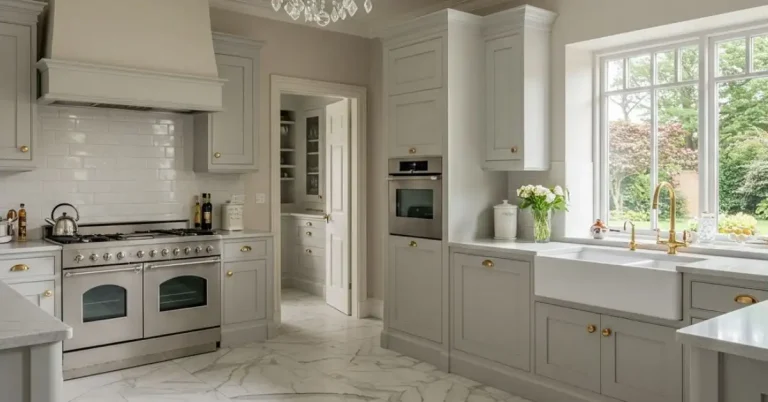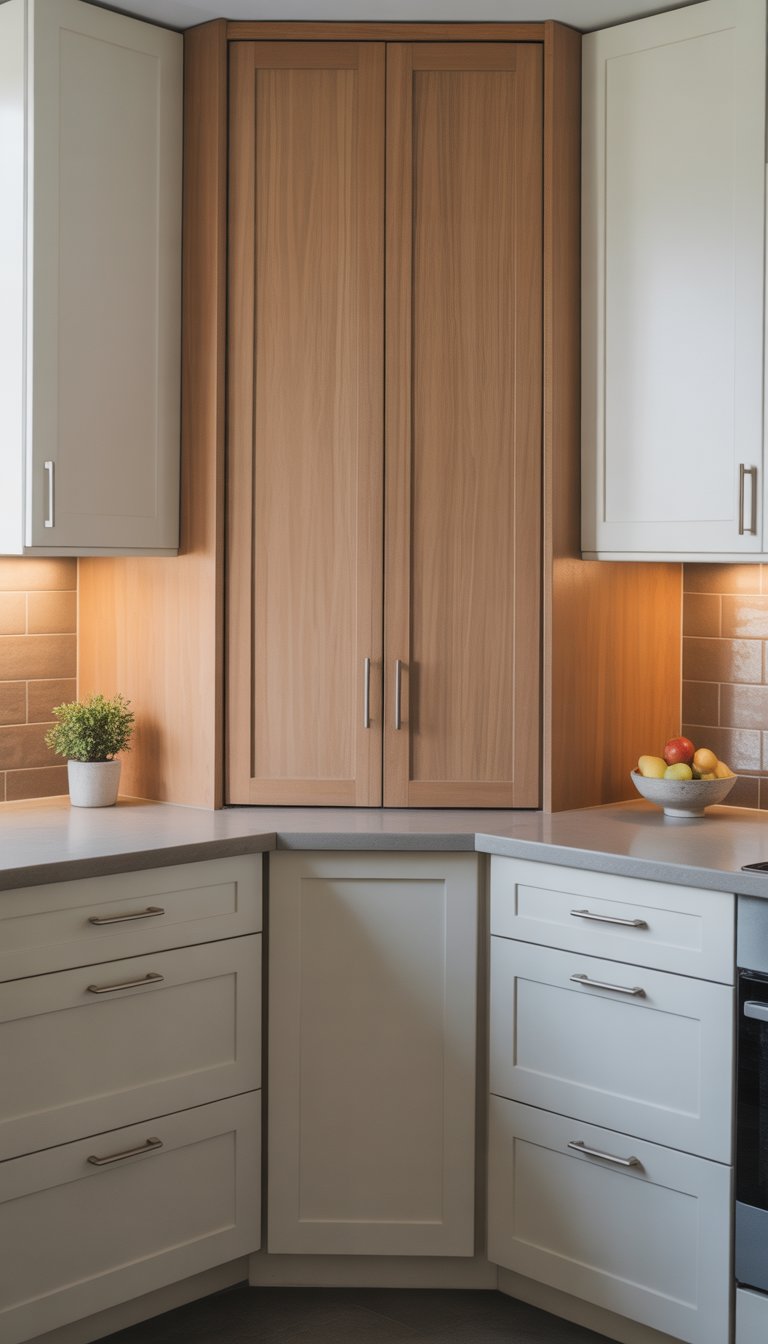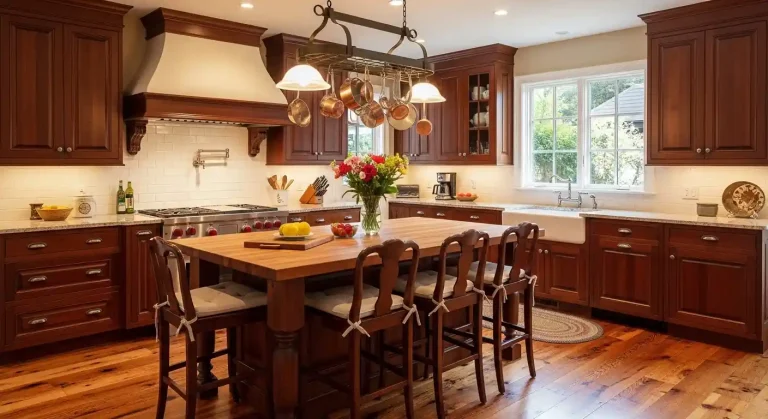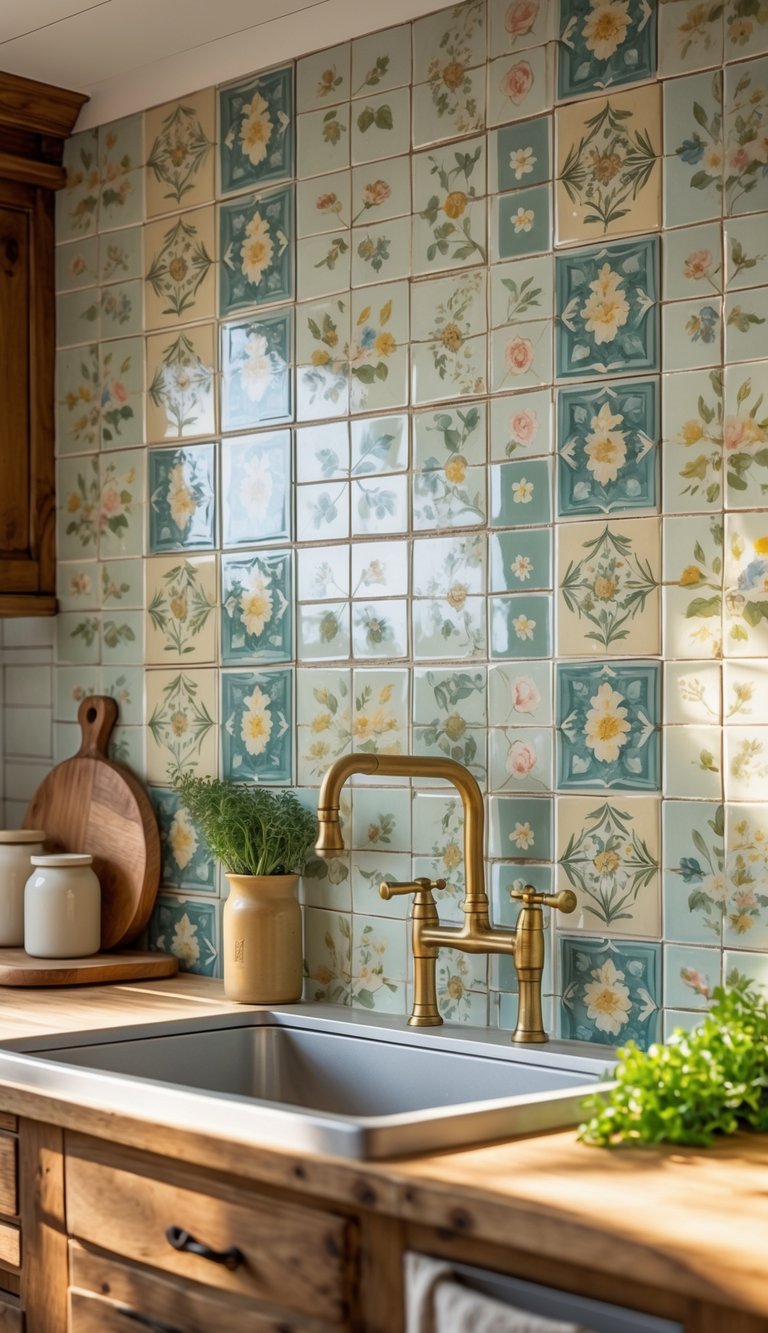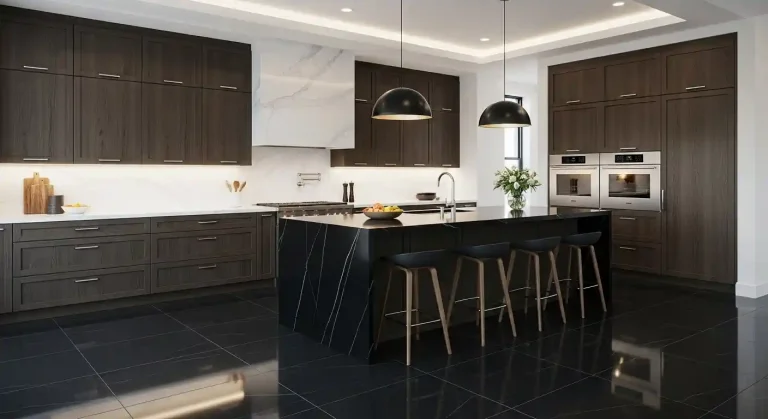Are Farmhouse Sinks Worth It? A Complete Guide
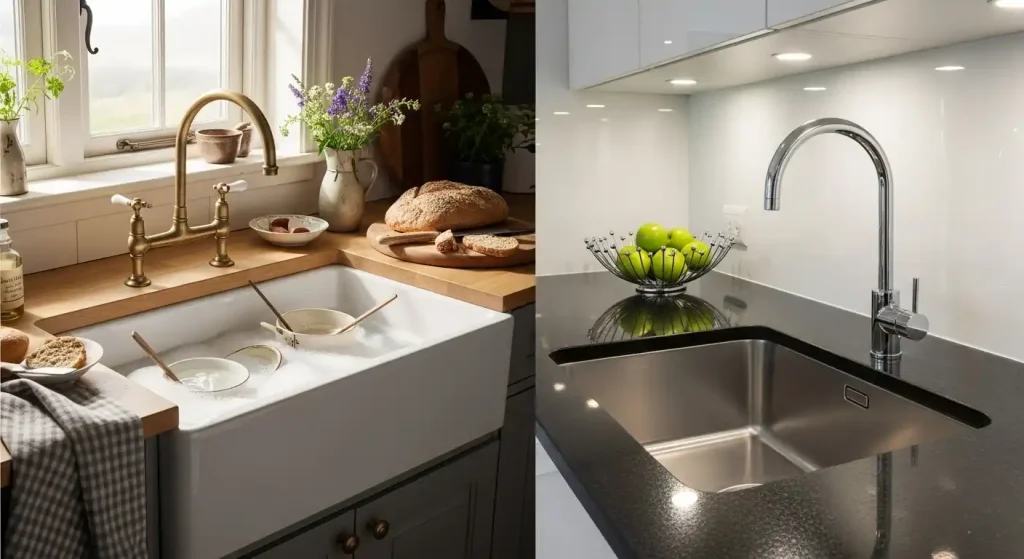
Farmhouse sinks cost 3-5x more than standard sinks, require cabinet modifications, and can add $2,000+ to kitchen renovations—but are they actually worth the investment?
If you’re planning a kitchen remodel, you’ve probably fallen in love with the rustic charm and spacious design of farmhouse sinks, but you’re questioning whether the substantial cost and installation complexity justify the upgrade.
The challenge isn’t just the sticker shock. Many homeowners experience buyer’s remorse after discovering hidden costs, installation challenges, and daily use limitations they didn’t anticipate.
Others absolutely love their farmhouse sinks and consider them the best kitchen investment they’ve made.
🍁🎃 Fall Finds & Seasonal Savings on Amazon !
Don’t miss out on the best discounts and top-rated products available right now!
*As an Amazon Associate, I earn from qualifying purchases.
In this honest guide, you’ll discover real pros and cons from actual users, complete cost breakdowns including hidden expenses, and practical scenarios where farmhouse sinks make sense versus when they don’t.
By the end, you’ll have the clarity to make a confident decision about whether a farmhouse sink is worth it for your specific situation and budget.
What Are Farmhouse Sinks?
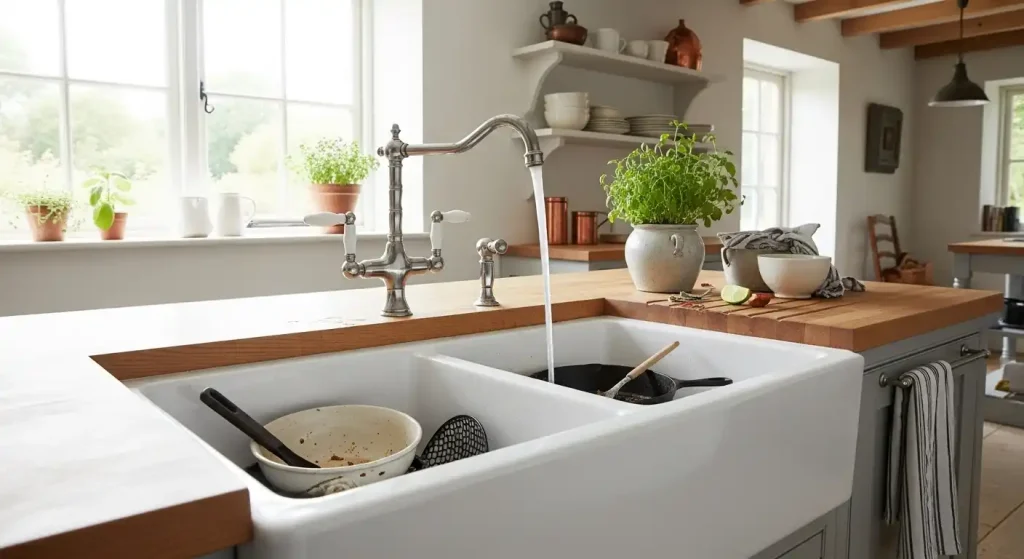
Farmhouse sinks, also known as apron-front sinks, are large, deep kitchen sinks that extend beyond the edge of your countertop with an exposed front panel.
The deep basin provides ample room for washing large pots, pans, and even oversized dishes with ease, typically measuring 8-10 inches deep compared to standard sinks at 6-8 inches.
Installation requires special considerations since most need to be installed onto an apron-skirt cabinet with a large cutout to accommodate the basin.
The exposed front panel becomes a design focal point, available in smooth, fluted, or decorative patterns.
Materials include stainless steel, ceramic, cast iron, and copper, with sizes typically ranging from 24-36 inches wide.
Weight considerations are significant—ceramic and cast iron versions can exceed 100 pounds, requiring reinforced cabinetry and professional installation.
The Real Cost of Farmhouse Sinks
A farmhouse sink costs between $1,000 and $4,000, representing a significant investment compared to standard sinks priced $200-$800.
Material dramatically affects pricing: stainless steel and ceramic farmhouse sinks start at around $250, while premium copper options can exceed $3,000.
Installation costs $300 to $500, notably higher than standard sink installation due to complexity.
However, this doesn’t include cabinet modifications, which add $200-$1,000 depending on your existing setup.
Many homeowners need custom cabinetry designed specifically for farmhouse sink installation.
Additional expenses include new faucets ($200-$600), plumbing modifications ($150-$400), and potential countertop changes ($200-$800).
🍁🎃 Fall Finds & Seasonal Savings on Amazon !
Don’t miss out on the best discounts and top-rated products available right now!
*As an Amazon Associate, I earn from qualifying purchases.
The total investment typically ranges $1,500-$5,000+ including all components. Compare this to standard sink replacement costing $400-$1,200 total.
Farmhouse Sink Pros: Why People Love Them
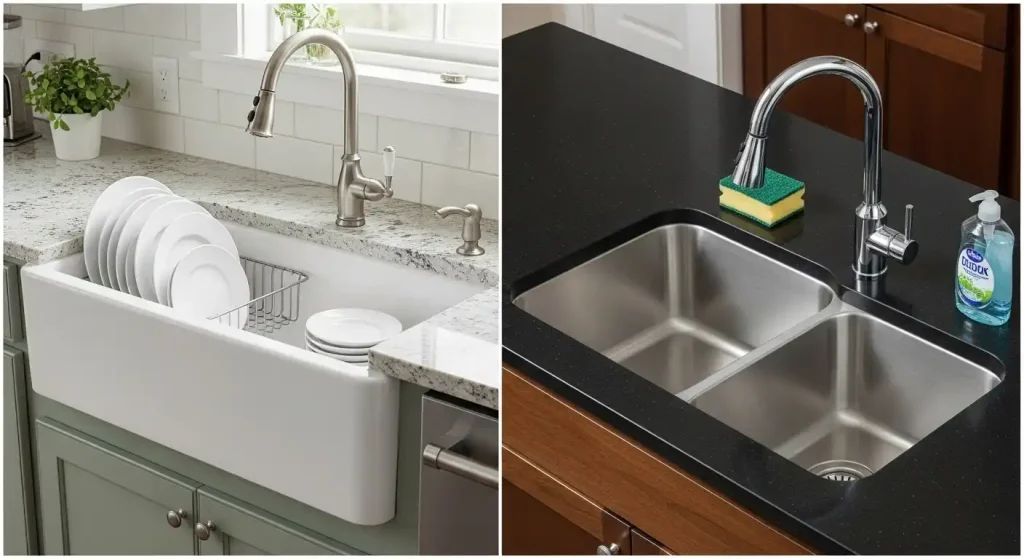
The generous capacity makes washing larger items like pots, pans, and baking sheets effortless, addressing the primary frustration with standard-sized sinks.
Everything fits comfortably with room to maneuver, eliminating awkward positioning of roasting pans or stockpots.
The deep basin design prevents water splashing onto countertops and floors, a common complaint with shallow sinks.
This becomes especially valuable during heavy cooking sessions or when washing messy items like paint brushes or garden vegetables.
Aesthetic impact represents a major selling point. Farmhouse sinks create stunning focal points that anchor kitchen design, providing authentic rustic charm that defines modern farmhouse style.
The exposed apron front offers opportunities for decorative elements that enhance overall kitchen appeal.
Durability advantages shine with quality materials. Cast iron and ceramic options can last decades with proper care, while stainless steel versions resist stains and scratches better than standard thin-gauge alternatives.
Farmhouse Sink Cons: The Honest Downsides
The deep design requires more bending for small tasks compared to standard sinks.
Daily activities like washing hands, rinsing dishes, or cleaning vegetables require uncomfortable bending that can strain your back over time.
Shorter users find this particularly challenging. Installation complexity creates significant drawbacks.
The large size and heavy weight require structural considerations that increase costs and complicate DIY projects.
🍁🎃 Fall Finds & Seasonal Savings on Amazon !
Don’t miss out on the best discounts and top-rated products available right now!
*As an Amazon Associate, I earn from qualifying purchases.
Cabinet modifications often mean complete lower cabinet replacement, not simple retrofitting. Storage limitations affect kitchen functionality.
The apron front design eliminates the cabinet drawer or storage space typically available directly under sinks, reducing kitchen storage capacity. This trade-off impacts organization, especially in smaller kitchens.
Water damage risks increase with improper installation. The exposed front and complex mounting system create potential leak points that could damage expensive cabinetry, making professional installation essential.
Style limitations restrict design flexibility. Farmhouse sinks work best with specific aesthetic styles and can look out of place in modern or contemporary designs that don’t embrace rustic elements.
Who Should Choose Farmhouse Sinks
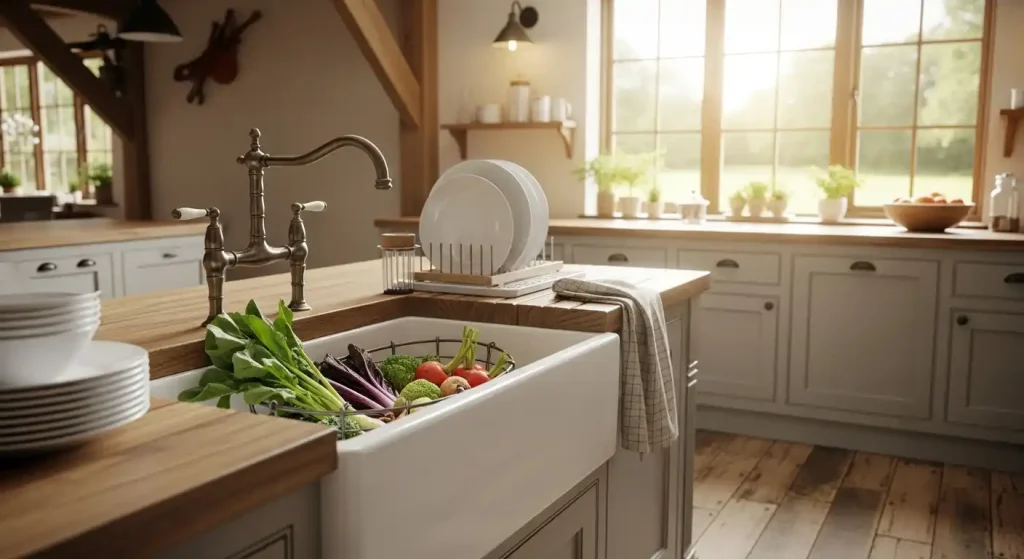
Frequent cooks and bakers gain the most value from farmhouse sink investments.
If you regularly prepare large meals, handle oversized cookware, or need substantial prep space, the generous capacity justifies higher costs through daily convenience.
Families who entertain often benefit from easy cleanup capabilities.
The deep basin handles party cleanup effortlessly, accommodating large serving pieces and multiple items simultaneously, especially valuable during holidays or frequent gatherings.
Long-term homeowners see better return on investment than those planning to sell within 5 years.
The substantial upfront costs make more sense when you’ll enjoy benefits for decades rather than hoping for quick resale value recovery.
Style-focused homeowners prioritizing authentic farmhouse aesthetics often find the investment worthwhile despite practical limitations.
If achieving specific design goals matters more than cost efficiency, farmhouse sinks deliver unmatched visual impact.
🍁🎃 Fall Finds & Seasonal Savings on Amazon !
Don’t miss out on the best discounts and top-rated products available right now!
*As an Amazon Associate, I earn from qualifying purchases.
Smart Alternatives to Consider
Large single-bowl undermount sinks offer similar capacity benefits without farmhouse sink costs or installation complexity.
Quality 30-32 inch single bowls provide substantial washing space at $200-$600, installed for $400-$800 total—significantly less than farmhouse options.
Deep prep sinks as secondary options provide farmhouse-style capacity without primary sink replacement costs.
Installing a large prep sink in an island gives you oversized washing capability while maintaining standard primary sink convenience.
Workstation sinks with integrated accessories create multi-functional spaces that maximize utility.
These systems include cutting boards, colanders, and drying racks, providing enhanced functionality at lower costs than full farmhouse conversions.
Making Your Decision
Budget analysis should consider total investment versus available alternatives.
If the $2,000-$5,000 total cost represents a significant portion of your renovation budget, consider whether other upgrades might deliver better value for your specific needs.
Usage patterns determine practical value. Families cooking daily meals, handling large cookware regularly, or entertaining frequently gain more value than occasional cooks.
Honest assessment of your kitchen habits prevents expensive mismatches between expectations and reality.
Kitchen size and storage needs factor heavily into decision-making. Smaller kitchens might benefit more from alternative storage improvements rather than sacrificing cabinet space for sink aesthetics.
Personal tolerance for daily use limitations determines long-term satisfaction. If bending frequently bothers you, or if you prefer separated sink functions, alternatives might serve better despite initial farmhouse appeal.
🍁🎃 Fall Finds & Seasonal Savings on Amazon !
Don’t miss out on the best discounts and top-rated products available right now!
*As an Amazon Associate, I earn from qualifying purchases.
Conclusion
Farmhouse sinks are worth the investment for frequent cooks who prioritize large-capacity functionality and authentic farmhouse aesthetics, despite costs 3-5x higher than standard options.
The substantial benefits—easy washing of oversized items, reduced splashing, and stunning visual impact—justify the $2,000-$5,000 total investment for homeowners who will use these advantages regularly.
However, they’re not worth it for occasional cooks, those with limited budgets, smaller kitchens with storage constraints, or anyone uncomfortable with the daily bending requirements.
The installation complexity, storage trade-offs, and ongoing maintenance considerations make them poor choices for buyers seeking simple functionality over style.
Ready to decide? Calculate your total investment including installation and cabinet modifications, honestly assess your cooking patterns, and consider alternatives that might deliver similar benefits at lower costs.
The right choice depends on matching farmhouse sink benefits with your actual needs and lifestyle rather than just initial aesthetic appeal.

